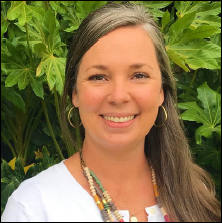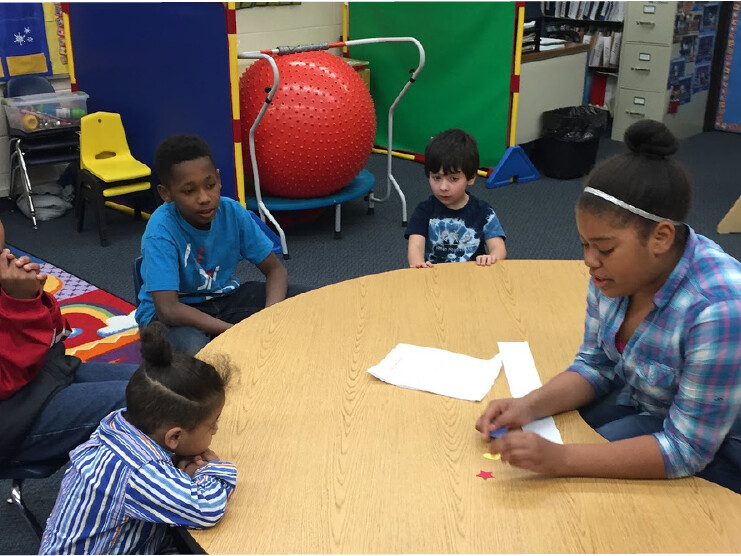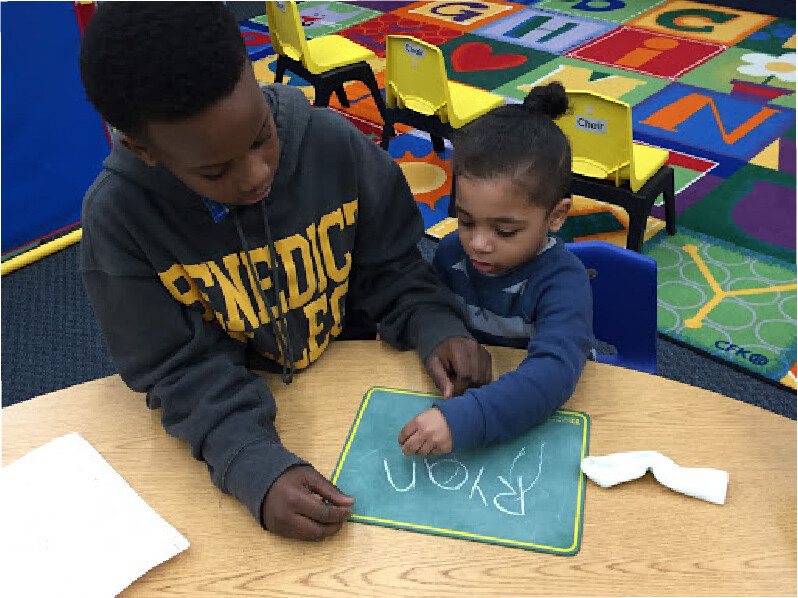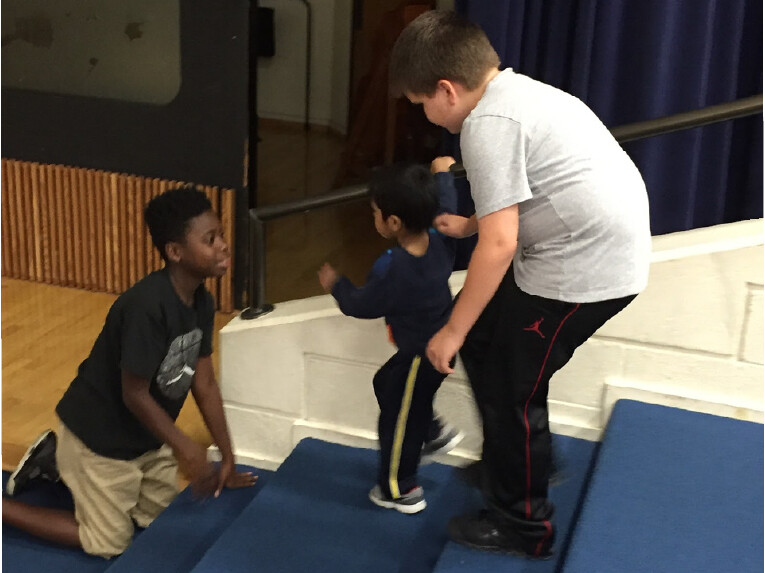As I walk down the hall of Harbison West Elementary school, I hear a large commotion coming from the area by the cafeteria. It’s past 1 p.m. so I know it’s not lunchtime anymore, but the noise continues to grow. I hear laughter, cheering, and music playing. Once I turn the corner and get a view of the cafeteria, I see a group of fifth-grade students playing with a parachute, bowling balls rolling down a line toward small plastic pins, and bubbles in the air. I have just walked in on Project Au-some’s endof-year celebration.
I immediately catch the eyes of a student we will call Dylan, whom I have watched struggle academically and behaviorally through the years. He is a quiet force to be reckoned with. You know those students, the ones too “big and bad” to be doing anything at school. When the fifth graders began visiting the preschool classroom, Dylan was often apprehensive and disengaged.
I scan the rest of the cafeteria and watch as the fifth grade students take their “Little Buddies,” (our preschool special education students) through different stations set up throughout the cafeteria. I smile. I look back at Dylan as he approaches Laura. Laura is one of the preschool students who uses a wheelchair and has severe delays in communication and motor skills. She is sitting on the sidelines with her aide. After Dylan and Laura’s aide exchange words, Dylan takes Laura through the parachute. I stand there speechless — I’m in awe of what is taking place.
Dylan was the only student that day that noticed Laura wasn’t engaged in any of the activities. Her aide was sitting with her on the sidelines and having her “watch” the fun. For Dylan, that wasn’t enough. He became her sidekick during the celebration and ensured that she was an active participant for the remaining stations and games. This is one of the many stories of fifth graders at Harbison West who have participated in Project Au-Some. Students continue to grow their social-emotional skills through exposure, experience, and teaching.
Exposure isn’t enough. We leverage this amazing opportunity to teach students about disabilities and diversity within those experiences.
Project Au-Some began in 2015. It is a concerted effort to build empathy and acceptance within fifth grade students, as well as build social skills within preschoolers with special needs. The purpose of Project Au-Some is to take opportunities teachers create for exposure and teach practical social emotional learning skills through these experiences. Our exposure begins with teacher-led activities within the classroom. By providing exposure we can do great things, but it doesn’t end there. Exposure isn’t enough. We leverage this amazing opportunity to teach students about disabilities and diversity within those experiences.
After each visit, I (as the special education teacher) take the students to a quiet area to reflect. Through these reflections teachable moments surface. I begin by asking open-ended questions including: What did you like? What surprised you? What scared you? What would you do next time? After an open discussion, each “Big Buddy” has an opportunity to draft a written reflection. In these reflections, students began asking for more and advocated to plan and teach lessons. While I worked hard to ensure students had opportunities to build and grow themselves, I also realized through listening that this could become much more than we ever imagined. By teaching about behaviors and reflecting on their experiences, it empowered the fifth graders to lead.
These images capture a few of the lessons developed after choosing an objective from a list of developmental skills, then planned and taught by the fifth graders. But this was only the beginning. The students began to research different disabilities and found that our library housed only two books that featured students with disabilities. We wrote grants to gather more books and the students created the PAL (Project AuSome Learning) Library that now has more than 250 books.
Throughout the years our fifth graders have chosen to be community activists for change. Each year they select a different organization to write to for their opinion writing project.
Throughout the years our fifth graders have chosen to be community activists for change.
In the spring of 2017, our fifth graders learned about the adaptation of one of their favorite books, “Wonder” by R.J. Polaccio. Each student wrote to the Children’s Craniofacial Association (CCA) requesting our school host a premier of the movie. In the Fall of 2018 we received a call from the director of the CCA and became a premier presenter. We raised money and Project Au-Some provided a free viewing for more than 700 students and families. Our students’ letters to CCA were displayed to promote the work they did to make changes within their community.
Students were invited back to experience the day, demonstrate that they have the power to change lives, and understand that their words and actions hold lasting meaning.
Project Au-Some students have changed minds, lives, and perspectives. It all started with taking opportunities for exposure and creating moments to intentionally teach. Not only did these opportunities provide a platform for action, but they also changed the fifth graders’ perspectives. Students were given an empathy survey at the beginning and end of the year to help document their experiences and measure how their mindsets changed. In three years of documentation, we have seen an average of 78% growth in our fifth graders. We have seen students like Dylan grow from 15 to 35 points on the empathy scale.
Students are continuing to write their stories while growing in their compassion and empathy because a group of teachers knew exposure alone wasn’t enough.
Students are continuing to write their stories while growing in their compassion and empathy because a group of teachers knew exposure alone wasn’t enough. Have you given your students the ability to learn about diversity and differing abilities?
Have you given your students the ability to make connections across grade levels? If not, I encourage you to give your students the opportunity to lead and learn about diversity and disabilities. The opportunity to ask questions and be exposed to others that are different from themselves. The opportunity to be agents of change.
It starts with you.
Share This Story:

Bethany Reilly
After earning her degree in Special Education from Winthrop University, Bethany Reilly entered the classroom and found her passion for working with students on the Autism Spectrum. Bethany has been teaching for the past 14 years, working with students ranging from early childhood to elementary special education. She continues to support the inclusion and acceptance of all students and teaches diversity awareness school-wide with the Project Au-Some team at Harbison West Elementary in Columbia, South Carolina.


